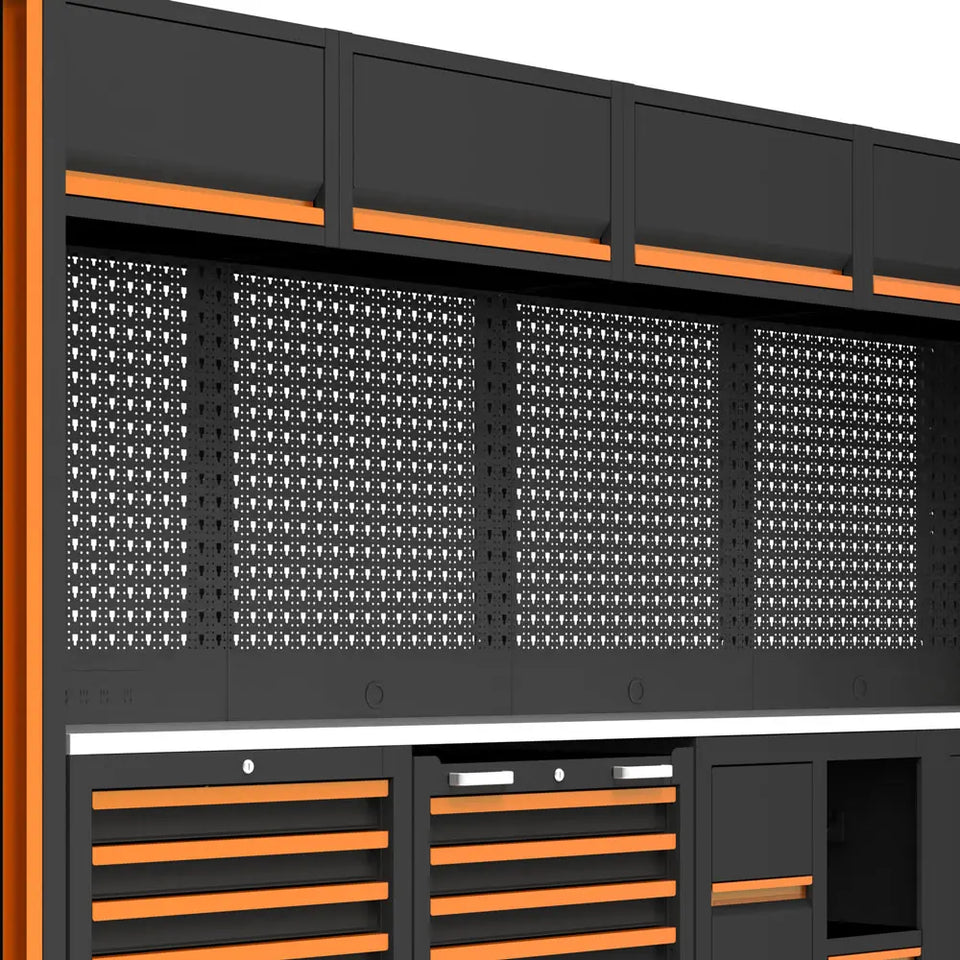Pegboards are the unsung heroes of organized workspaces, from garages to commercial tool stations. But not all pegboards are created equal. The hole type—round or square—can dramatically affect accessory compatibility, load capacity, and even user perception. So which format should you choose for your product line or workspace setup?
USA-Style Round Holes

Overview:
Typically 1/4" or 3/16" in diameter, round holes are the standard in North American markets. They’re compatible with a wide range of hooks, bins, and accessories available at major retailers like Home Depot, Lowe’s, and Amazon.
Pros:
- ✅ Universal Compatibility: Most pegboard accessories are designed for round holes, making sourcing and bundling easier.
- ✅ Cost-Effective: Manufacturing round-hole pegboards is generally cheaper due to simpler tooling.
- ✅ Flexible Layouts: Easy to reposition hooks and accessories without alignment constraints.
Cons:
- ❌ Stability Issues: Hooks can wobble or fall out under heavy loads unless locking mechanisms are used.
- ❌ Limited Load Capacity: Round holes don’t grip accessories as tightly as square ones.
Best Use Case:
DIY garages, retail displays, and budget-conscious modular systems targeting U.S. consumers.
Euro-Style Square Holes

Overview:
Square holes (typically 10mm x 10mm) are common in European modular systems and industrial setups. They’re designed for precision-fit accessories that often lock into place.
Pros:
- ✅ Superior Stability: Square holes allow for locking tabs or clips, reducing accessory movement.
- ✅ Professional Aesthetic: Clean lines and flush-mounted accessories appeal to high-end or industrial buyers.
- ✅ Higher Load Capacity: Better suited for heavier tools and equipment.
Cons:
- ❌ Accessory Limitations: Fewer off-the-shelf options, especially in U.S. markets.
- ❌ Higher Manufacturing Costs: More complex tooling and tighter tolerances required.
Best Use Case:
Industrial workstations, premium modular carts, and European-targeted product lines.
🧮 Compliance & Strategy
For U.S., round-hole pegboards offer broader compatibility and easier bundling with accessories. However, if you're looking for a product as a premium item or industrial-grade—especially for serious users or international markets—square holes may justify the added cost of accessories..
🏁 Final Verdict
| Feature | USA Round Holes Vs | Euro Square Holes |
|---|---|---|
| Compatibility | ⭐⭐⭐⭐⭐ | ⭐⭐ |
| Stability | ⭐⭐ | ⭐⭐⭐⭐⭐ |
| Load Capacity | ⭐⭐ | ⭐⭐⭐⭐ |
| Manufacturing Cost | ⭐⭐⭐⭐ | ⭐⭐ |
| Aesthetic Appeal | ⭐⭐ | ⭐⭐⭐⭐ |
Sellers choose round holes for mass-market appeal and cost efficiency or
Sellers choose square holes for premium positioning, stability, and industrial use.
BUT..
🔀 Hybrid Pegboards: The Best of Both Worlds

Hybrid pegboards feature a dual-hole configuration—typically alternating USA-style round holes with Euro-style square holes. This format is gaining traction among modular workspace designers and users looking to maximize accessory compatibility without sacrificing stability.
Pros:
- ✅ Universal Accessory Fit: Supports both round-peg hooks and square-tab accessories, reducing SKU fragmentation.
- ✅ Flexible Merchandising: Ideal for bundling mixed accessory kits or offering upgrade paths for industrial users.
- ✅ Market Versatility: Appeals to both U.S. and international buyers, easing cross-border compliance and marketing.
Cons:
- ❌ Visual Complexity: Mixed hole shapes may appear cluttered or less refined in premium settings.
- ❌ Higher Production Cost: Requires precision tooling and layout planning to maintain structural integrity.
Best Use Case:
If price of finished product is what you are content with then go Hybrid, you can satisfy all pros and cons in one decision.





